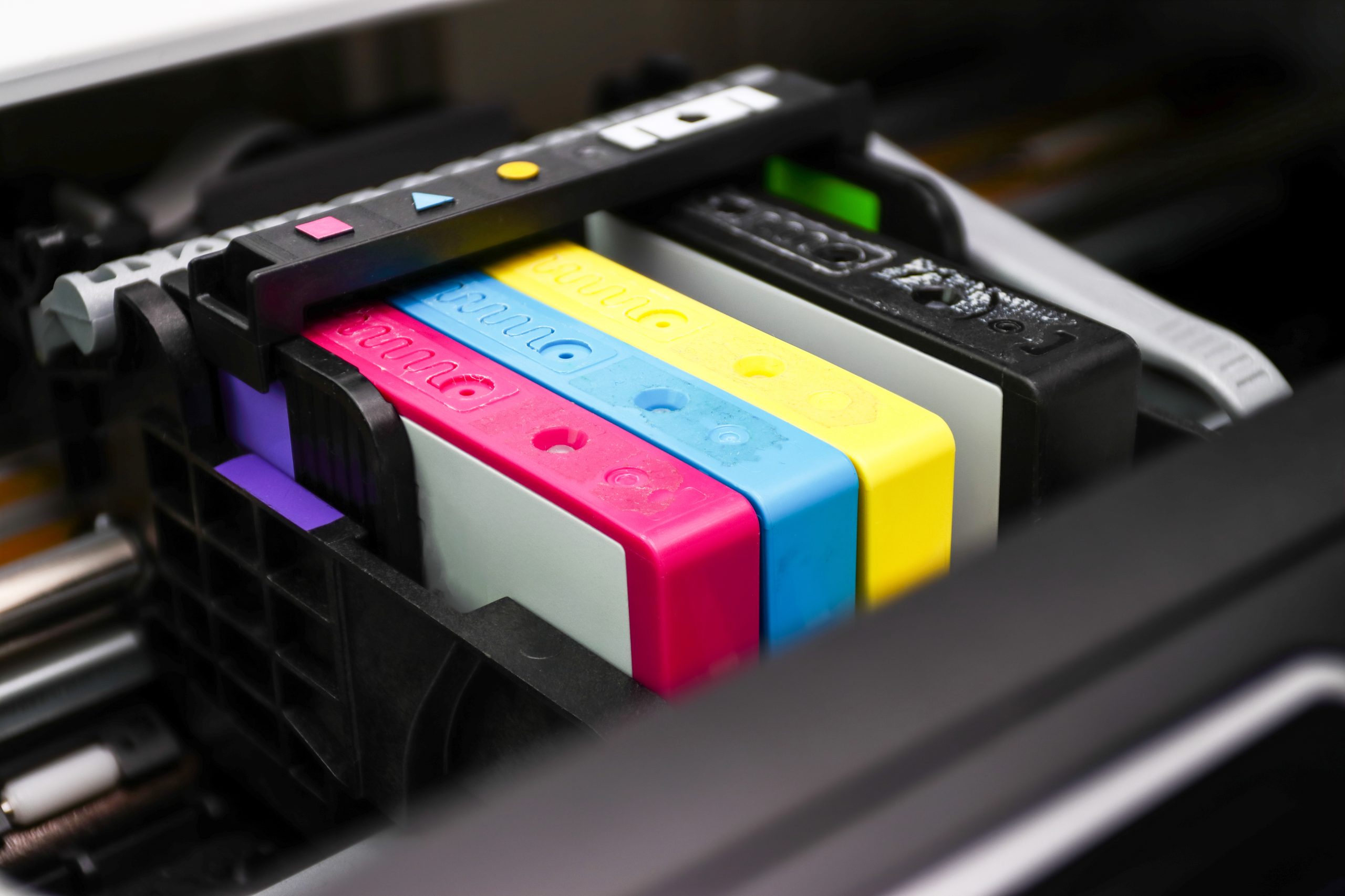As the demand for environmentally friendly products continues to grow, many companies are stepping up to offer eco-conscious options. These eco-friendly inks are made from renewable resources, such as vegetable oils or soybeans, and they are free from harmful chemicals and toxins. By using these inks, you can reduce your carbon footprint and contribute to a greener and more sustainable future.
In this article, we will explore the top 5 eco-friendly inks currently available in the market. Whether you’re a business owner looking to make your printing practices more sustainable or an individual who wants to make a small but impactful change in your everyday life, this guide will help you choose the best eco-friendly ink option for your needs.
1. UV-curable Ink
UV-curable ink is a type of ink used in the printing industry that offers several benefits and characteristics that make it eco-friendly. One of the main advantages of UV-curable ink is its efficiency and the ability to use less ink compared to other wide format print technologies.
UV printing is a process where the ink is instantly cured and dried with UV light exposure. This means that the ink does not require any time to dry, eliminating the need for print providers to use additional ink. This not only saves printing costs but also reduces the amount of wasted ink.
Furthermore, the curing process of UV ink is energy-efficient, making it an environmentally friendly choice. UV inks are cured using UV LED lights, which consume less energy compared to traditional curing methods. The use of these energy-efficient curing systems contributes to the reduction of energy consumption and lowers carbon footprint.
UV-curable ink also offers other characteristics that make it eco-friendly. It is free from harmful chemicals and substances, such as solvents and volatile organic compounds (VOCs), commonly found in solvent-based inks. This makes it a safer option for both the environment and the individuals working with the ink. Additionally, UV-curable ink is compatible with a wide range of substrates, including recycled materials, further promoting sustainable practices within the printing industry.
2. Algae-based Ink
Algae-based ink is a sustainable alternative to petroleum-based inks that are commonly used in the printing industry. This eco-friendly ink is derived from renewable algae cells, which are obtained as a waste product from algae biofuel operations. By utilizing these algae cells, this ink helps reduce the environmental footprint of the printing industry.
One of the key advantages of algae-based ink is its availability for paper and corrugate-based products, making it suitable for a wide range of applications. This ink offers high-quality prints while minimizing the negative effects on the environment.
Compared to petroleum-based inks, algae-based ink significantly reduces the carbon footprint and reliance on fossil fuels. It is made from organic and biodegradable materials, reducing the overall ecological footprint of the printing process. Algae-based ink also eliminates the use of harmful chemicals and solvents commonly found in traditional ink formulas.
In addition to its eco-friendly characteristics, algae-based ink exhibits excellent performance in digital and commercial printing technologies. It offers vibrant colors and is compatible with various substrates, making it suitable for both packaging and flexible packaging industries.
Overall, algae-based ink presents an innovative and sustainable solution for the printing industry. Its composition from renewable algae cells and reduced environmental impact make it an ideal choice for those seeking to reduce their carbon footprint and embrace environmentally friendly practices.
3. Soy-Based Ink
Soy-based ink is a popular choice as an eco-friendly alternative to petroleum-based inks in the printing industry. Made from soybean oil, this type of ink offers several benefits and characteristics that make it a sustainable option.
One of the key advantages of soy-based ink is its renewable nature. Soybeans are a renewable resource that can be replenished through sustainable farming practices, making it a more environmentally friendly choice compared to petroleum-based inks, which are derived from fossil fuels.
In addition to being renewable, soy-based ink also has lower agricultural costs. Soybeans can be grown and harvested more efficiently compared to other crops used for ink production, reducing the overall environmental impact.
Another important characteristic of soy-based ink is its biodegradability. Unlike petroleum-based inks, which can be harmful to the environment and take a long time to break down, soy-based ink is readily biodegradable, reducing its impact on landfills and ecosystems.
Soy-based ink also offers excellent ink efficiency. It has a lower viscosity, allowing it to be used more effectively, resulting in reduced ink waste and lower production costs.
Furthermore, soy-based ink is easier to remove during the recycling process. It has a lower affinity for paper fibers, making it easier to separate from the paper during recycling, which can contribute to the production of high-quality recycled paper.
Overall, soy-based ink provides a sustainable and eco-friendly solution for the printing industry, with its renewable nature, low agricultural costs, biodegradability, ink efficiency, and ease of removal during recycling.
4. Wate-based Ink
Water-based ink is a popular choice for eco-conscious individuals and businesses looking for an alternative to traditional inks. This type of ink offers numerous benefits and features that make it a sustainable and environmentally friendly option.
One of the key advantages of water-based ink is its composition primarily of natural and biodegradable materials. Unlike solvent-based inks that contain harmful chemicals, water-based inks are made from a combination of water, pigments, and binders derived from natural sources. This significantly reduces the environmental impact and makes them less harmful to ecosystems.
Another important feature of water-based ink is its easy removal prior to recycling. When paper is recycled, it needs to be free from any contaminants, including ink particles. Water-based ink can be easily washed away from paper fibers during the recycling process, ensuring the production of high-quality recycled paper.
Water-based ink also has the ability to create high-quality images. It offers excellent color vibrancy, saturation, and sharpness, making it suitable for a wide range of printing applications, including digital printing, screen printing, and commercial printing. This versatility and ability to produce high-quality prints make water-based ink a preferred choice for industries such as packaging, where image clarity and presentation are crucial.
In the market, there are various types of water-based inks available to suit different printing requirements. This includes dye-based water inks, which are ideal for printing on absorbent materials like paper, and pigment-based water inks, which offer enhanced durability on a range of substrates. Whether it’s for fine art prints, fabric printing, or packaging, there is a suitable water-based ink option available.
Overall, water-based ink offers an eco-friendly alternative to traditional inks, with its natural and biodegradable composition, easy removal for recycling, high-quality image production, and versatility for various printing applications.
5. Petroleum-Based Inks
Petroleum-based inks, also known as solvent-based inks, have a significant impact on the environment due to their composition and use of harmful materials. These inks are made from petroleum derivatives and contain volatile organic compounds (VOCs) and other toxic chemicals.
The composition of petroleum-based inks includes petroleum solvents, resins, and pigments. These inks rely on the evaporation of the solvents to dry and adhere to surfaces. However, this evaporation releases VOCs into the atmosphere, contributing to air pollution and the formation of smog. The use of harmful materials such as heavy metals and toxic solvents in these inks also poses risks to human health and ecosystems.
Another negative effect of petroleum-based inks is their production of greenhouse gases. The manufacturing and use of these inks contribute to the release of carbon dioxide and other emissions that contribute to climate change. The extraction and refining of petroleum used in these inks also have a significant environmental impact, including habitat destruction and water pollution.
Overall, petroleum-based inks have detrimental effects on the environment, including air pollution, climate change, and harm to ecosystems. As a result, many industries are shifting towards more eco-friendly ink alternatives, such as water-based inks or vegetable-based inks, to minimize their ecological footprint and reduce the negative impacts on the environment.

Conclusion
In conclusion, there are numerous eco-friendly ink options available in the market today. These inks not only contribute towards a more sustainable environment but also offer high-quality printing results. Whether you are looking for water-based inks, soy-based inks, or vegetable-based inks, there is a wide range of choices to suit your printing needs.




